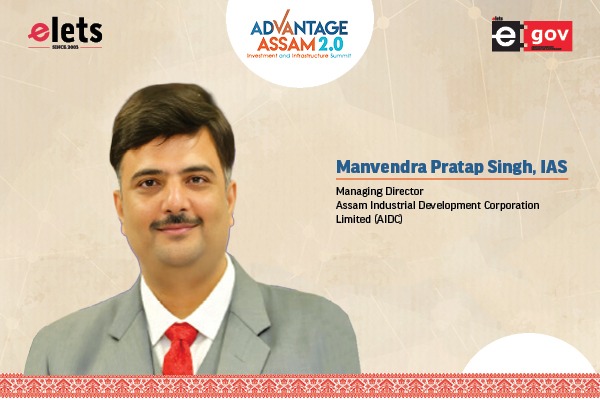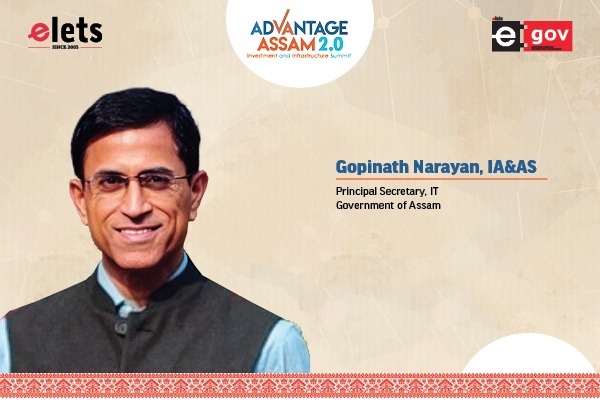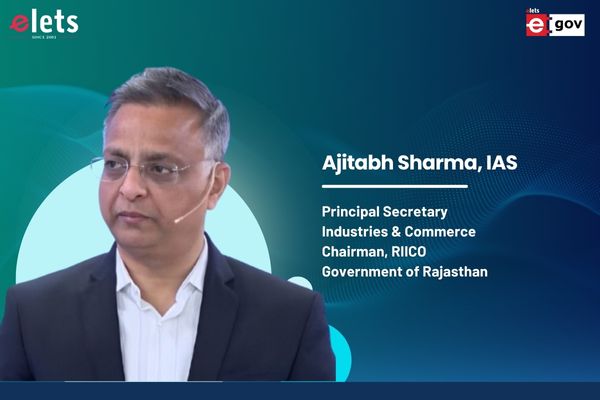
In Lalitpur, a land where tradition blends seamlessly with resilience, a visionary idea took shape. Facing the challenges of rural life, the administration aspired to create smarter, technology-driven villages. The VICCC initiative became the solution, integrating AI, IoT, and human innovation to revolutionize governance and uplift communities, one village at a time, shared Akshay Tripathi, District Magistrate, Lalitpur, Uttar Pradesh in an exclusive conversation with Ritika Srivastava of Elets News Network (ENN).
What inspired the Lalitpur Administration to conceptualize and implement the Village Integrated Command & Control Center (VICCC) initiative?
How does it align with the broader goals of rural development? Lalitpur, a district rich in cultural heritage and known for its Bundeli lineage, has long been a symbol of resilience and progress. However, challenges in rural governance such as access to healthcare, education, public safety, and infrastructure—demanded a transformative approach. The VICCC initiative was born out of a vision to create a selfreliant, technology-enabled governance framework that uplifts the rural population while preserving and respecting their cultural roots.

The system was unveiled to the Hon’ble Prime Minister at the Global Investors Summit in Lucknow, in 2023, as a pioneering exemplar of smart rural governance. Spearheaded by the District Administration’s collaboration with expert organizations and innovative startups, a pilot initiative with CEQU Labs catalyzed the swift design and deployment of cutting-edge technology. This ensured seamless integration of advanced solutions tailored to the unique needs of rural communities.
The initiative was further strengthened by the support of the District Panchayat Raj Office and the active involvement of local bodies, fostering a solution deeply rooted in the aspirations of the villages it serves. The grant from the Department of Administrative Reforms and Public Grievances, Ministry of Personnel, Public Grievances, and Pensions, has empowered efforts to scale this model, positioning Lalitpur as a trailblazer in rural digitization and development.

Today, the VICCC stands as a benchmark for next-generation governance, championing accessibility, sustainability, and inclusivity in alignment with India’s broader rural development objectives.
VICCC leverages advanced technologies such as AI, IoT, and automation. Could you elaborate on how these technologies have been integrated and their impact on rural governance and development?
VICCC integrates cutting-edge technologies to ensure rural governance becomes both efficient and impactful. AI-driven systems are employed for surveillance, crowd monitoring, and behavioural analysis. IoT-enabled devices, such as Health ATMs, gather real-time data for diagnostics and public health monitoring. Automation tools have streamlined processes like grievance redressal, reducing resolution times.
Our collaboration enabled us to develop and implement these systems in record time. The robust and scalable solutions were refined through local feedback and administrative inputs. The result is a governance framework that is proactive, data-driven, and inclusive, significantly improving the lives of villagers.
The AI-driven WhatsApp-based voice bot, “Gram Samwad,” seems to be a key innovation. How has it performed in resolving rural grievances?
Gram Samwad has been a revolutionary step in making governance accessible. This AI-powered voice bot allows villagers to lodge grievances or seek information in their local dialects through simple voice commands. It processes grievances within 2 seconds and provides an efficient tracking mechanism, enabling the administration to prioritize and act on issues according to urgency.
The bot’s seamless integration with the VICCC system ensures real-time tracking and transparency. Its multilingual capability bridges communication gaps, empowering even less-educated sections of society to engage actively in governance. This innovation has made resolving real-life problems as simple as sending a WhatsApp note, reaffirming our commitment to citizen-centric systems.
The introduction of Health ATMs and e-education platforms is a unique feature. How have these facilities been received by villagers, and what measurable impact have they had so far?
Health ATMs have been transformative for villagers, offering diagnostic and basic healthcare services. Multiple training and testing sessions conducted over six months have led to the early detection of illnesses like diabetes and hypertension. These services have significantly reduced hospital referrals, ensuring that healthcare is accessible and proactive.
Similarly, the e-education platforms have revolutionized learning in rural Lalitpur. Over 200 students enrolled on the Open Education Platform within the first six hours of its launch, which is a strong motivator for expanding these services. Attendance has increased, and STEM subject performance has improved. These initiatives are bridging the gap between rural and urban education systems, ensuring brighter futures for our children.
The integration of AI features such as facial recognition in CCTV systems is noteworthy. How has this enhanced public safety and governance in the villages?
AI-powered facial recognition systems have significantly enhanced public safety. Deployed across 140 CCTV nodes, these systems analyze real-time footage to detect anomalies, unauthorized gatherings, or acts of violence. Alerts are sent to law enforcement within 5 seconds, ensuring swift action.
This has led to a noticeable drop in crime rates in pilot villages and an overall improvement in community safety. The data collected is also used to identify patterns and allocate resources efficiently, ensuring a proactive approach to governance.
Could you share key learnings from the pilot implementations in Dhorra and Jakhlaun Gram Panchayats? How have these informed the scaling strategy for VICCC?
The pilots conducted in Dhorra and Jakhlaun provided invaluable insights into the system’s implementation, underscoring the importance of community engagement to ensure villagers understood and trusted the new systems. Connectivity challenges in remote areas were effectively addressed through hybrid networks, leveraging UBR-based communication and the VICCC. These pilots, which served over 11,000 residents, helped refine the system’s usability and scalability.
Building on these learnings, a phased rollout strategy has been adopted for all 415 villages in the district. Under the DARPG Grant from the Department of Personnel and Training (DoPT), 15 villages are being developed in fast-track mode as part of the initial phase. The strategy emphasizes the integration of all available infrastructure with the Command Center developed at the District Panchayat Raj Office in Lalitpur, ensuring streamlined operations and resource optimization.
Additionally, plans are being standardized for the development of Digital Public Infrastructure (DPI) in Lalitpur to prevent redundant expenditure on similar projects. This approach also minimizes reliance on maintenance-intensive technologies like optical fibre, ensuring a more cost-effective and sustainable implementation. By focusing on infrastructure readiness, capacity building, and continuous feedback, the initiative aims to deliver long-term success and set a benchmark for rural digitization.
Also Read: Raipur’s Entrepreneurial Future Shaped by ARAMBH and INNOV8
VICCC has received national and international recognition, including at IMC 2024 and UN ITU SDG 2023 nominations. What do these recognitions mean for the project, and how do they motivate further innovation?
Being showcased at IMC 2024 and nominated for the UN ITU SDG Awards 2023 is a moment of pride for Lalitpur. These accolades signify the district’s transformation from a culturally rich region to a global leader in rural innovation.
The SDG nomination particularly recognized the scalable design of VICCC and its alignment with sustainable development goals. It highlights the Lalitpur Administration’s vision to bridge the urban-rural gap, supported by CEQU Labs’ contributions as a key technology partner in developing the system. Such recognition motivates us to continue innovating and sharing this model with other regions to drive impactful rural development worldwide.
Be a part of Elets Collaborative Initiatives. Join Us for Upcoming Events and explore business opportunities. Like us on Facebook , connect with us on LinkedIn and follow us on Twitter, Instagram.
"Exciting news! Elets technomedia is now on WhatsApp Channels Subscribe today by clicking the link and stay updated with the latest insights!" Click here!













